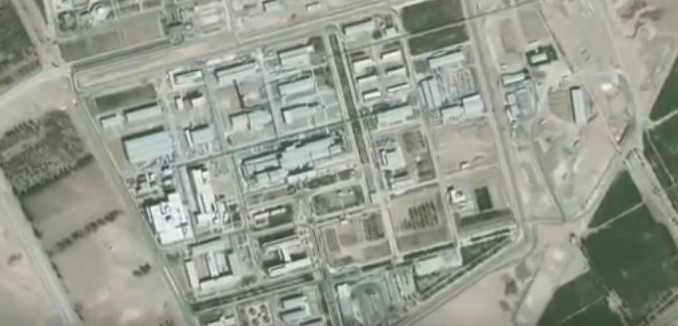The International Atomic Energy Agency (IAEA) does not require suspicion of Iranian violations of the 2015 nuclear deal to demand access to military sites for inspections, two nuclear weapons experts argued in an analysis published Thursday.
While Iran continues to insist that it will not allow inspections of its military sites by the IAEA, Olli Heinonen, former deputy directory-general of the IAEA and David Albright, a former weapons inspector and currently president of the Institute for Science and International Security, wrote that such inspections are justified not only to investigate suspected violations of the deal, but also to ensure that Iran is abiding by restrictions written in the accord.
Heinonen and Albright point to Section T of the nuclear deal and observe that in its first several quarterly reports on Iran’s compliance with the nuclear deal, the IAEA did not address the concerns laid out in that section. Section T describes a “routine inspection approach” designed to ensure Iran’s “compliance by regular IAEA monitoring.” Access under Section T does not require “alleging violations,” to demand access, but rather it is “analogous to verifying that allowed activities and equipment are not misused, as is common to many aspects of IAEA safeguards at declared nuclear sites.”
Though Section T requirements are not part of the usual safeguards agreements, they were included in the nuclear deal because of “a recognition of the need to do so and Iran’s obligation to cooperate in fulfilling these commitments.”
Heinonen and Albright wrote that the need for instituting inspections on the basis of Section T stems from Iran’s acquisition of dual-use items that could be used to develop nuclear weapons. For example, there is a clause in the nuclear deal that prohibits Iran from “designing, developing, fabricating, acquiring, or using explosive diagnostic systems (streak cameras, framing cameras and flash x-ray cameras) suitable for the development of a nuclear explosive device, unless approved by the Joint Commission for non-nuclear purposes and subject to monitoring.”
Iran, it is known, has acquired a number of high-speed cameras, which, if still in use, must be monitored by the IAEA. Iran has not received the required approval from the Joint Commission to use such cameras. One organization that has sought such cameras is the Institute of Physics at Lavisan, a military organization.
It isn’t clear if the IAEA has asked Iran about its acquisition or use of these cameras. If Iran is using them without approval from the Joint Commission, it is violating Section T of the nuclear deal. If it is using them, it must submit to inspections to ensure that they are being used in ways that are consistent with the deal.
Given the likelihood that Iran is violating terms of Section T, Heinonen and Ablright recommend:
The United States and its allies should press the IAEA to develop and establish an effective, credible verification regime under Section T that includes requests to access military sites. The United States and the EU3 should also raise Section T and the likely need for approvals of such equipment and activities by Iran at the next Joint Commission meeting. Toward that goal, Iran should declare to the IAEA its sites and equipment subject to Section T verification and approvals.
A report this week from Reuters suggests that the IAEA isn’t paying attention to possible Iranian violations under Section T. In response to questions about whether the IAEA would inspect Iranian military sites, an IAEA official said, “we’re not going to visit a military site like Parchin just to send a political signal.” The official made no mention of questions of Iranian use of dual-use equipment that could be grounds, under Section T, for demanding inspections of military sites.
[Photo: sherlock72 / YouTube ]




